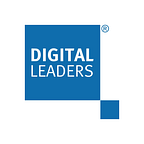Data sharing for smart transport
Written by Bryan Marshall, Head of IoT and AV Technology at Nominet
Of the many technological innovations currently jostling for attention, driverless cars may demand the biggest spotlight during 2019. The global autonomous vehicle market is expected to grow at a rate of almost 40% from 2019 to 2026 as the technology and software progress rapidly, adding $7 trillion to the global economy.
Familiarity is also growing, with at least 46 companies worldwide — including Tesla and Alphabet — developing self-driving cars. Here in the UK, activity such as the DRIVEN project (which I am involved with) is getting connected autonomous vehicles (CAVs) on the roads more regularly as we explore the realities of deploying the technology which could save 600,000 lives by 2045.
That said, one of the less glamourous areas that presents many challenges as we progress is data sharing. If self-driving cars are to form the centre of future smart transport systems, there needs to be more agreement about the mechanisms of data sharing, whether in an open manner or privately between trusted parties. According to Intel, driverless cars will generate 4TB of raw data daily, but only by sharing some of this can we unlock the promised benefits of smart transport, such as reduced congestion and pollution, or tackling issues such as the isolation of older people or mobility for the disabled.
Some of the fundamental challenges are technical. We need to identify what datasets are available, ascertain the size, and ensure there is the wireless capability to enable such large data transfers. Connectivity could become a sticking point here, as the current UK 4G networks can’t handle these types of loads, especially considering we have over 30 million vehicles on our roads. Regardless of the rapid onset and promise of 5G networks, data optimisation will always be needed, but will be shaped initially by operational and regulatory requirements. Unfortunately, sharing data for the ‘greater good’ will not automatically feature high on the priority list.
That said, there may be good reasons for a reticence over data sharing. The security of CAVs is obviously a big concern for operators and manufacturers keen to avoid opening up new attack vectors, while commercial entities will want to minimise commercially sensitive data falling into the hands of competitors.
There are also regulatory conditions now affecting data sharing — most notably for the EU, GDPR. Manufacturers and service operators are obliged to follow these EU rules on data privacy, but this could undermine the effectiveness of a smart transportation system. For example, revealing vehicle journeys may lead to an individual being identified, but having knowledge of a planned journey in advance could be one of the most useful pieces of data for a future urban transport system, enabling road operators to dynamically load balance networks to a much finer degree than today.
Consensus over these complicated issues will likely only be reached with legislation and regulation around data sharing, but this must be informed by a dialogue which includes cross-industry perspectives.
More use cases will help provide evidence and context to guide the debates around data sharing — and hopefully advertise the benefits. For example, Transport for London’s open data releaseunlocked up to £130m in economic benefits and savings annually, not to mention improving the journeys of millions of transport users daily. This clearly demonstrates the potential of smarter transport systems, provided we have the infrastructure to support them.
These are exciting times for those working at the forefront of future transport, but questions around data sharing loom large. We will soon need some answers if we hope to progress. If the UK wants to keep pace with the world and remain a global tech leader, data sharing regulations for smart transport need to start moving up the national agenda. Consensus in the form of legislation will be vital to allow us to progress towards unlocking the great potential of CAVs, both for current generations and the many more to come.
Originally posted here
Originally published at digileaders.com on January 28, 2019.
